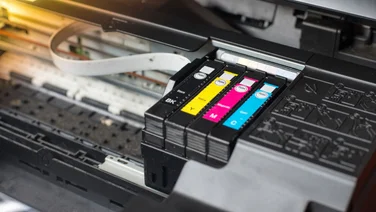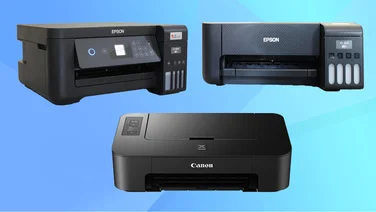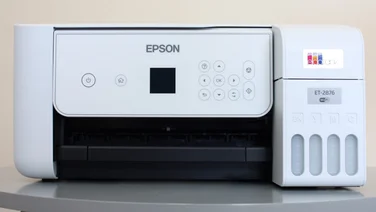To help us provide you with free impartial advice, we may earn a commission if you buy through links on our site. Learn more













Sensor size is one of the key determining factors for image quality, so it’s great to see so many large-sensor compact cameras passing through our labs. The Nikon P330’s 1/1.7in sensor is around 50 per cent bigger than the ones used in most compact cameras. It’s paired with an f/1.8 lens, which gathers more light than usual to improve image quality in low light. This advantage is lost at the long end of the 5x zoom, though, as the aperture closes down to f/5.6.

These are promising specs, but Nikon isn’t the only manufacturer to come up with this recipe. The P330 faces stiff competition from the Fujifilm XF1, Canon PowerShot S110 and Panasonic Lumix DMC-LF1. The P330 is currently the least expensive of the four, though.

It certainly doesn’t look cheap with its magnesium alloy shell, adorned with a mode dial and command dial. There’s another wheel on the back, which controls the aperture in aperture-priority and manual exposure modes, and also speeds up menu navigation. That’s fortunate, because access to many functions is via the main menu only. There’s a customisable button on the front – we used it to access the ISO speed – but no quick-menu system to jump to other key settings.

PERFORMANCE
Performance in normal use is pedestrian, taking two seconds on average between shots. This increased to around six seconds in raw mode, and the camera didn’t respond to any input while it was saving raw shots. Continuous shooting was at 10fps for 10 frames, but the camera took 26 seconds to save them. For more sustained bursts, we had to settle for 0.7fps shooting. Selecting raw and continuous modes together still allowed 10fps shooting, but it took 42 seconds to save them. The slower, longer-lasting burst mode ran at 0.17fps for raw – that’s the slowest continuous performance we’ve ever measured. Even the video mode was slow, taking around three seconds to get going from the time we pressed the record button.
Battery life is another weak area, at 200 shots. We don’t normally scrutinise recharging times, but the four-and-a-half hour quoted time seems slow. Charging happens in the camera so you can’t charge one battery while using another. You can’t shoot while it’s charging, either.
It’s not all doom and gloom, though. The ten-shot buffer can be used to save photos while the camera is simultaneously recording 1080p videos. Unlike most other cameras that offer this dual recording mode, these photos are as sharp as the camera’s normal output and not simply 1080p video frames that have been upscaled to a higher resolution. The only downside was that we had to wait for them to be saved after video recording has finished.

The photo on the left was taken while simultaneously recording a video (hence the 16:9 aspect ratio). Details are much sharper than the same mode in the Panasonic LF1 (right), which looks suspiciously like an enlarged 1080p frame rather than the sensor’s native resolution – click to enlarge
Other welcome features include GPS and an integrated neutral-density filter for reducing the amount of light reaching the sensor – useful for controlling motion blur in photos and videos. Nikon hasn’t included an orientation sensor, though; portrait-shaped photos must be rotated manually.
VIDEO QUALITY
Video quality is this camera’s best asset. Details in its 1080p clips were astonishingly sharp, with subtle details rendered with absolute precision. Both the autofocus and zoom were smooth and virtually silent. Manual exposure control is sadly unavailable but the exposure compensation button becomes an exposure lock button while recording – so you can avoid sudden changes in exposure when light levels vary.
The 16Mbit/s bit rate wasn’t quite high enough to avoid compression artefacts in fast-moving scenes, but it does mean that videos last for up to 29 minutes without exceeding the 4GB individual file limit for SD cards – which use the aging FAT32 file format. Slow-motion capture is available, too, with half-speed playback at 720p and quarter-speed at VGA resolution.
IMAGE QUALITY – CLICK SAMPLE SHOTS TO ENLARGE
Photo quality was impressive, too. Details exhibited the same razor-sharp edges that we saw from the video output. However, close inspection – and direct comparisons with the Panasonic LF1, which we suspect uses the same sensor – revealed that the Nikon uses heavy digital sharpening to boost the contrast of fine details. The Panasonic’s output wasn’t as punchy but to our eyes it looked more natural. We could achieve this more natural look with the P330 by processing raw images in Lightroom, but the performance penalty for raw is a bit of a turn-off.

Details in this photo are bitingly sharp

The camera handles these clean, block colours extremely well too

Comparisons with the Panasonic LF1 reveal that the Nikon’s details are quite heavily processed. The Panasonic picks out these fine details more accurately, to our eyes

There’s nothing to choose between the two cameras’ raw output here – we suspect they use the same sensor
Image quality in low light was a big step up from cameras with smaller sensors and narrower apertures. However, it trailed slightly behind its similarly specified peers. ISO 1600 shots exhibited scruffier shadows and less fine detail than the Panasonic LF1 or Fujifilm XF1. Meanwhile, its automatic settings in low light weren’t as well-informed as the Panasonic’s, with slow shutter speeds turning moving subjects into unrecognisable blurs

Image quality is holding together reasonably well at ISO 400, but some detail has been lost to noise reduction

Quality at ISO 1600 is pretty good, but the Panasonic LF1 does a better job of suppressing noise and maintaining the texture in the hair. There’s not a huge amount in it, though
The P330 originally cost around £350, but the price has already been cut by over £100. That makes it easier to forgive the unremarkable JPEG (and terrible raw) shooting speed. The Fujifilm XF1 only costs around £30 more, though. It’s more responsive and it has the edge for image quality, with smoother output at fast ISO speeds. It can’t match the Nikon for video quality, though. If that’s a priority and you’re not in any rush to take your photos, the P330 is still an excellent choice.





